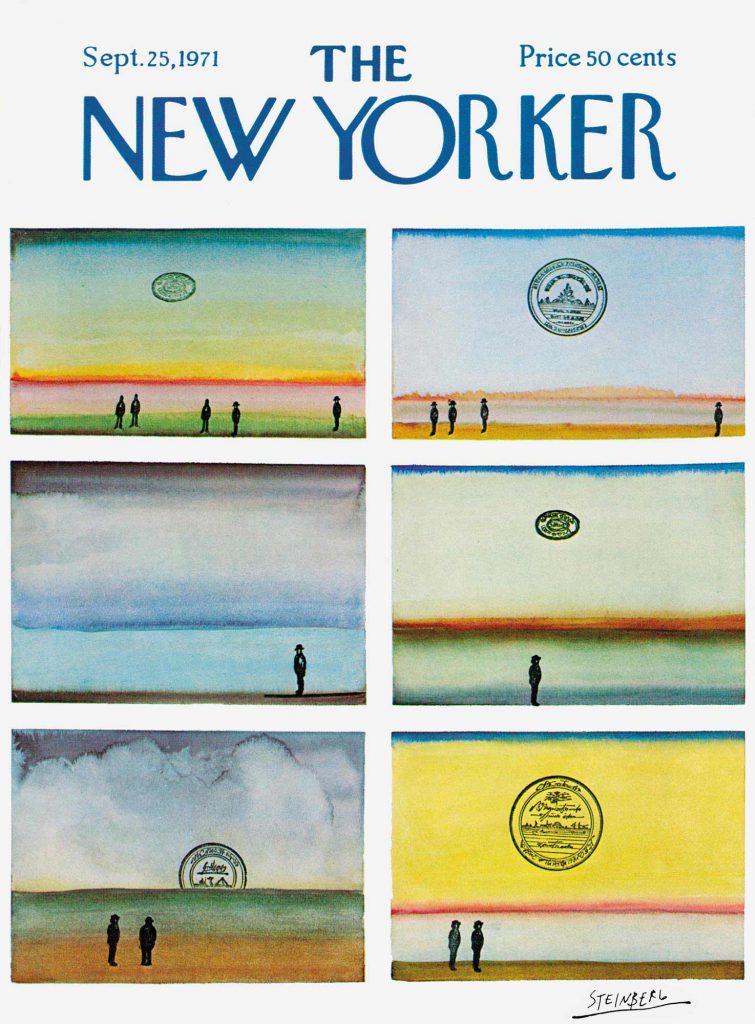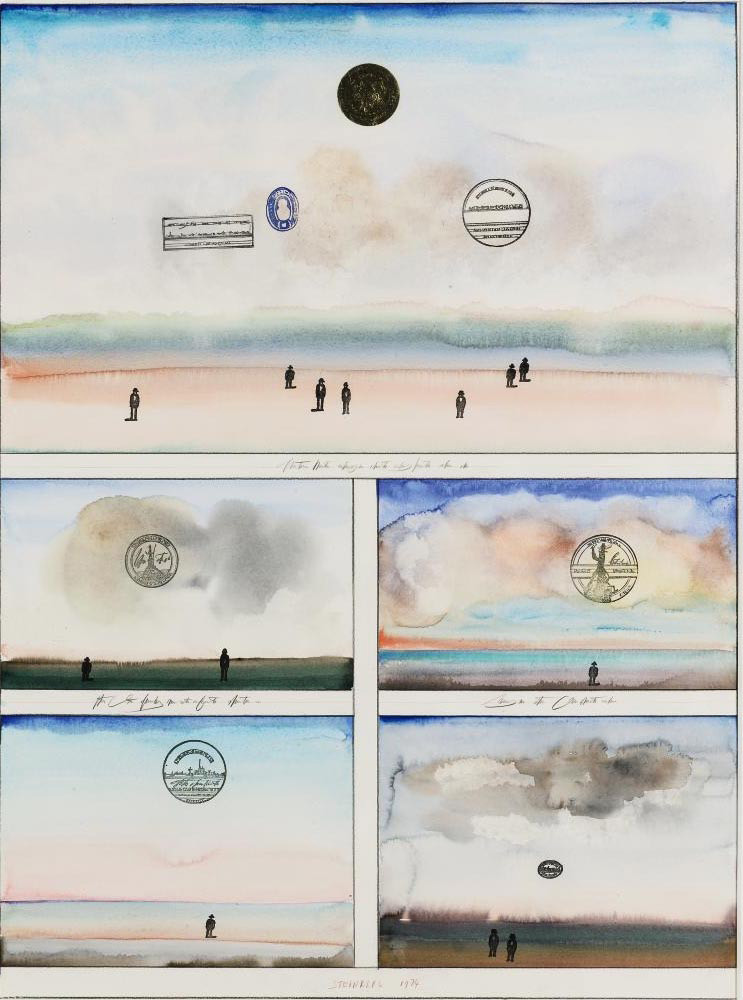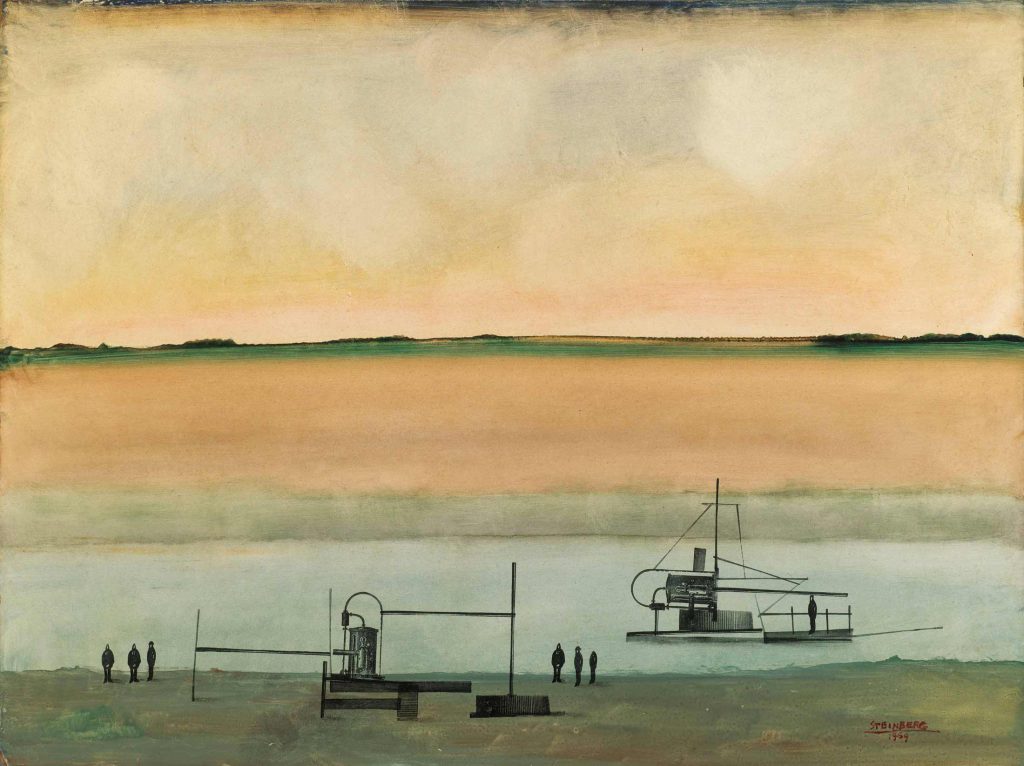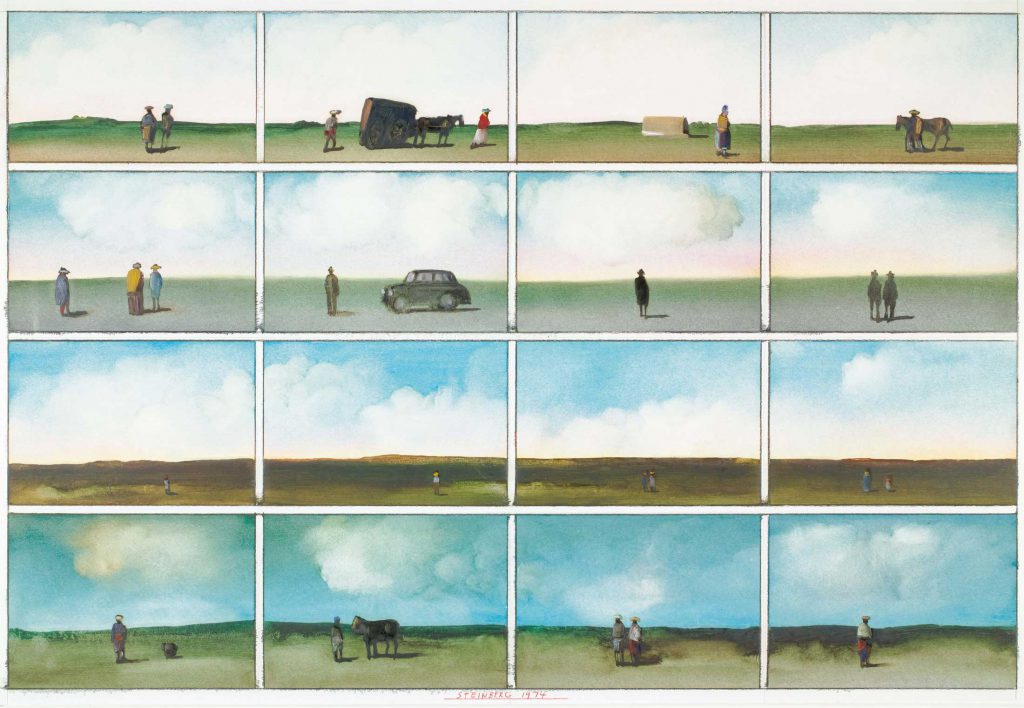The “Postcard-Style” landscapes emerge in these years.




Exquisitely brushed or sponged in oil or thin watercolor wash, they are simple compositions, with cloud-sky formations above, punctuated by rubber stamp sun-seals, and a horizontal expanse of flat land and/or water below; sometimes a bit of faux calligraphy feigns elucidation. They are peopled with painted or (usually) rubber stamp figures, the kind of embellishments called staffage in earlier landscape painting. “If I use a rubber stamp…I do it to show that this paint is not real paint, it’s a symbol of the thing painted.”60 Steinberg didn’t depict nature, but nature as translated by art, from high to low, the low end here represented by the clichéd vistas of tourist postcards. Explaining one of his multipaneled postcard-style landscapes to an interviewer, he said:
“These postcards represent not the reality, not the truth—they represent our convention and our idea of what nature looks like. So in a sense, the greatest influence [on] landscape has been Poussin, [one of] the inventors of landscapes, who have also been the inventors of the postcards. So that now nature looks to us like imitating art,… or it imitates the slapstick of the sunset, all the histrionics of nature and light and sun. Now, the way I do it is to solve this thing with just two or three brushstrokes.”61
And of a drawing of a painter in front of a landscape: “The landscape contains every cliché in the history of painting. Different textures—oil, crayon, ink. The artist in this drawing thinks he’s painting a pure landscape. He isn’t. He’s making postcards.”62 The titles of the postcard-style landscapes are often as generic as the compositions—“landscape,” “sunset,” or just “postcard”; but they are just as often christened with the name of a locale where Steinberg lived or visited. Travelogue by fiat.